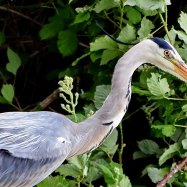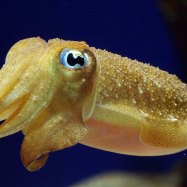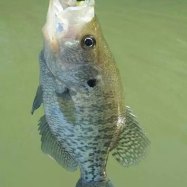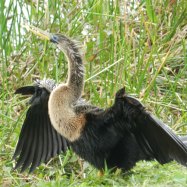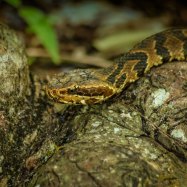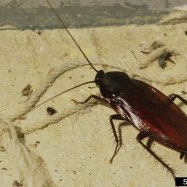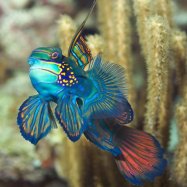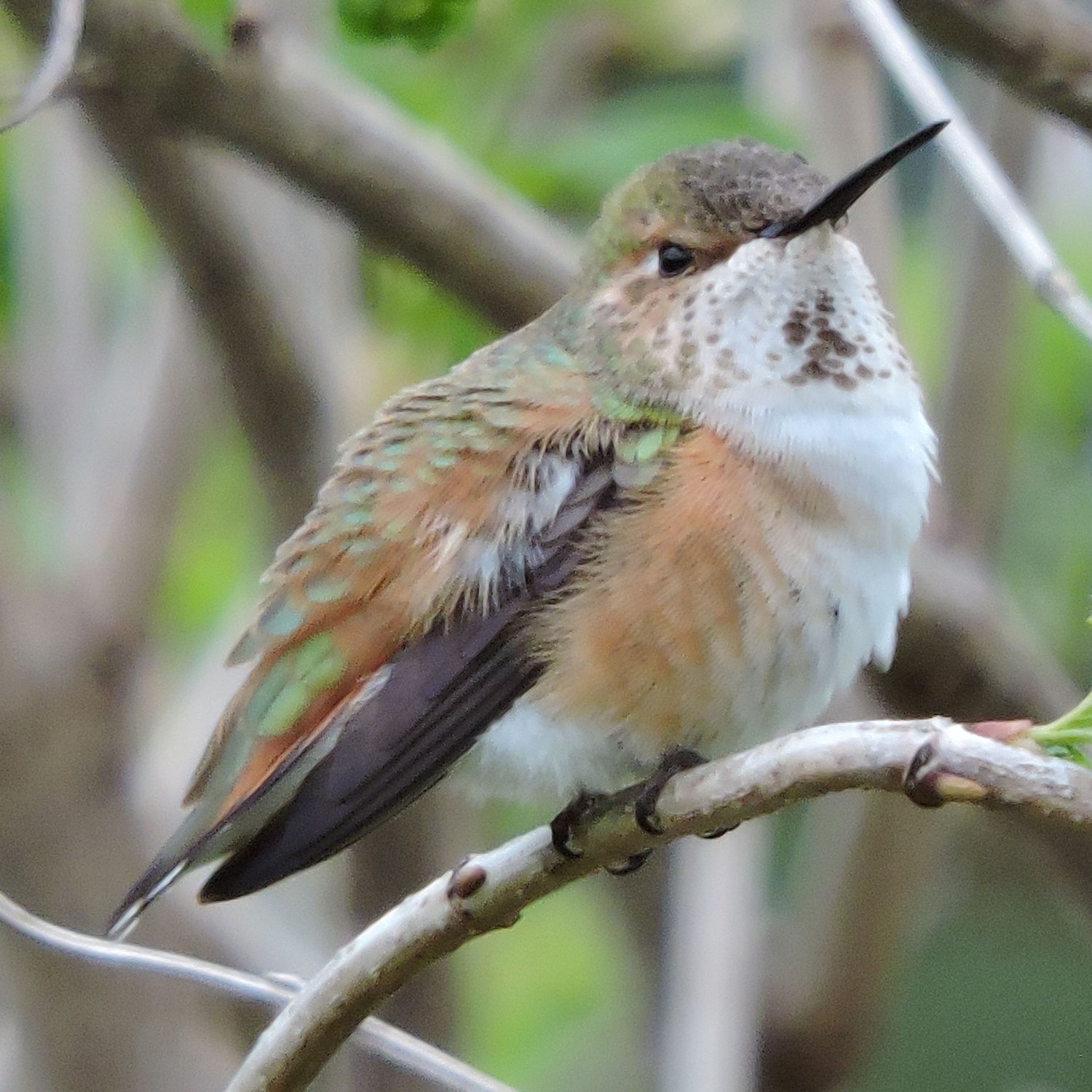
Rufous Hummingbird
8-11 cm
Meet the Rufous Hummingbird, a tiny but mighty bird found in the Western United States, specifically in the Rocky Mountains and Alaska. Measuring 8-11 cm in length, with a small and compact body and short wings, this member of the Trochilidae family is a true avian marvel. #hummingbird #westernUS #birds #wildlife
Animal Details Summary:
Common Name: Rufous Hummingbird
Kingdom: Animalia
Habitat: Forests, woodlands, meadows, gardens
The Wondrous Rufous Hummingbird: An Intrepid Jewel of Nature
The Rufous Hummingbird, known scientifically as Selasphorus rufus, is a small but mighty creature that has captivated bird enthusiasts and nature-lovers alike. As one of the smallest bird species in the world, these charming feathered jewels are a sight to behold. From their distinctive coloring to their unique feeding methods, the Rufous Hummingbird is truly a wonder of nature.This article will delve into the fascinating world of the Rufous Hummingbird, discussing their physical characteristics, habitat, behavior, and ecological importance Rufous Hummingbird. Get ready to be enchanted by this tiny but mighty bird.
The Kingdom of the Rufous Hummingbird
Like all animals, the Rufous Hummingbird belongs to a specific kingdom, phylum, class, order, and family. In the case of these feathered wonders, their kingdom is Animalia, meaning they are part of the animal kingdom. They also belong to the phylum Chordata, indicating that they are vertebrates with a spinal cord.Next comes the class, Aves, which includes all birds. The Rufous Hummingbird falls under the order Apodiformes, which means "footless" in Greek, referring to their tiny feet. Lastly, they belong to the family Trochilidae, which is a diverse group of hummingbirds found throughout the world.
From Forests to Gardens: The Habitat of Rufous Hummingbirds
One of the unique characteristics of Rufous Hummingbirds is their diverse habitat. They can be found in various environments, including forests, woodlands, meadows, and even gardens Red Kite. As long as there are flowers and a source of nectar, these birds can thrive.While they are prevalent throughout North America, they are commonly found in the western United States, especially around the Rocky Mountains. They can also be spotted in Alaska, making them one of the few species of hummingbirds found in this region.
A Nectarivorous Diet: How Rufous Hummingbirds Feed
The Rufous Hummingbird has a specialized diet that sets them apart from other birds. They are nectarivorous, meaning they primarily feed on nectar from flowers. They also consume small insects and spiders to supplement their diet with protein.Their long beaks and tongues are perfectly designed to reach deep into the flowers' nectar, making them important pollinators. As they move from flower to flower, they unknowingly transfer pollen, allowing for the pollination and reproduction of various plant species.
American Beauty: The Geographical Distribution of Rufous Hummingbirds
The Rufous Hummingbird's geographical distribution is limited to North America, making them a unique and beloved species on this continent. They are commonly found in the United States, Canada, and Mexico, and are a symbol of pride and beauty in these countries.Their vibrant colors and unique characteristics draw bird enthusiasts, researchers, and everyday observers to these birds in their natural habitats. Their presence is a reflection of the diverse and intricate ecosystems found in these regions.
A Colorful Marvel: The Unique Coloring of Rufous Hummingbirds
One of the most striking features of the Rufous Hummingbird is its distinctive coloring. The male Rufous Hummingbird has a bright orange-red back and belly, with an iridescent orange throat. Their beautiful colors are a result of light refracting off their feathers, giving them a shimmering effect.On the other hand, female Rufous Hummingbirds have a more muted coloration, with a greenish-brown back and white belly. However, they still have the same vibrant orange throat as their male counterparts. These colors serve as a form of camouflage, allowing them to blend into their surroundings and avoid predators.
The Physical Attributes of the Rufous Hummingbird
In addition to their bright coloring, Rufous Hummingbirds have several other physical attributes that make them unique. Their body shape is compact and small, measuring between 8-11 cm in length. They also have short wings, allowing them to move quickly and nimbly in the air.Their short wings are essential for their hummingbird-like flight, where they can hover in mid-air, fly sideways, and even fly backwards. This flying ability is not only impressive but also helps them maneuver and access hard-to-reach nectar sources.
A United Species: The Country of Origin of Rufous Hummingbirds
The Rufous Hummingbird's country of origin is the United States, Canada, and Mexico. They are considered a unified species, as they can be found in all three countries throughout the year. However, their habitats may differ depending on the season, with some birds migrating to warmer regions during the winter.The breeding range of Rufous Hummingbirds is also widespread, extending from Southern Alaska to Northern California. This range allows for various populations and genetic diversity within the species.
The Importance of Rufous Hummingbirds in Nature
Aside from their beauty and unique characteristics, Rufous Hummingbirds play a crucial role in the ecosystems they inhabit. As nectarivores, they are vital pollinators for many plant species, helping to spread pollen and contribute to plant reproduction.They also play a crucial role in the food chain, as both predators and prey. Their insect consumption helps to control pest populations, while they are also preyed upon by larger birds, such as hawks and owls. Maintaining a healthy Rufous Hummingbird population is essential for maintaining the balance of these ecosystems.
The Conservation of Rufous Hummingbirds
Like many other animal species, Rufous Hummingbirds face various threats to their population and habitats. Climate change, habitat destruction, and pesticide use are among the most significant threats facing these beautiful birds.Climate change has a significant impact on their breeding and migration patterns, while habitat destruction and pesticide use can directly affect their food sources. Therefore, it is essential to take measures to conserve and protect their habitats and raise awareness about their ecological importance.
In Conclusion
In the world of birds, few species can rival the unique characteristics and ecological importance of Rufous Hummingbirds. From their vibrant coloring to their specialized diet and impressive flying abilities, these miniature marvels never fail to captivate and amaze us.As we continue to learn more about these birds and their significance in nature, it is vital to appreciate and protect their habitats. Only then can we ensure that generations to come will have the pleasure of experiencing the beauty and wonder of the Rufous Hummingbird in the wild.

Rufous Hummingbird
Animal Details Rufous Hummingbird - Scientific Name: Selasphorus rufus
- Category: Animals R
- Scientific Name: Selasphorus rufus
- Common Name: Rufous Hummingbird
- Kingdom: Animalia
- Phylum: Chordata
- Class: Aves
- Order: Apodiformes
- Family: Trochilidae
- Habitat: Forests, woodlands, meadows, gardens
- Feeding Method: Nectarivorous
- Geographical Distribution: North America
- Country of Origin: United States, Canada, Mexico
- Location: Western United States, Rocky Mountains, Alaska
- Animal Coloration: Bright orange-red on the back and belly, iridescent orange on the throat
- Body Shape: Small and compact with short wings
- Length: 8-11 cm
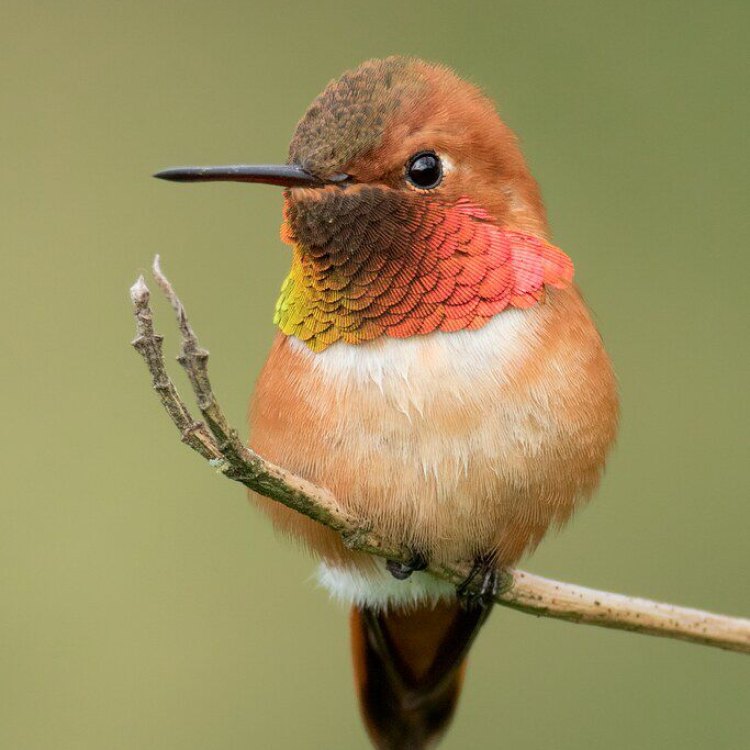
Rufous Hummingbird
- Adult Size: Small
- Average Lifespan: 3-5 years
- Reproduction: Sexual
- Reproductive Behavior: Males perform elaborate courtship displays to attract females
- Sound or Call: High-pitched trilling sound
- Migration Pattern: Long-distance migratory
- Social Groups: Solitary
- Behavior: Aggressive and territorial, especially during breeding season
- Threats: Habitat loss, climate change, predation
- Conservation Status: Least Concern
- Impact on Ecosystem: Pollination of flowers
- Human Use: Attracts birdwatchers, used in native plant gardening
- Distinctive Features: Bright orange-red coloration, long curved bill
- Interesting Facts: One of the feistiest and most territorial hummingbirds in North America
- Predator: Small hawks, snakes, and domestic cats
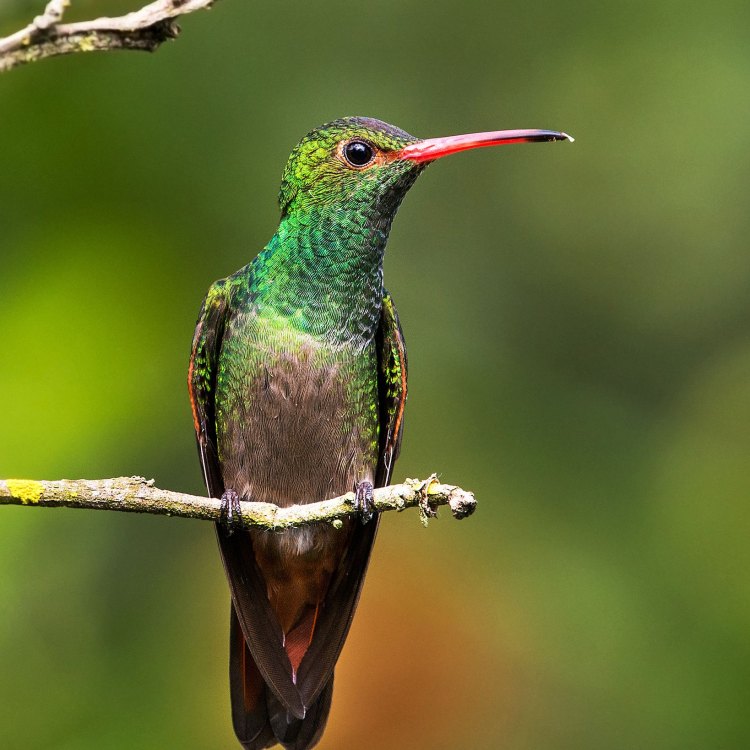
Selasphorus rufus
The Mighty Rufous Hummingbird: A Tiny Warrior of the Skies
The world of birds is an endless source of wonder and amazement. From the majestic eagle soaring high in the sky to the comical penguin waddling on land, each species has its unique charm and characteristics. But there is one bird that stands out from the rest with its bold personality and vibrant appearance – the Rufous Hummingbird (Selasphorus rufus).Despite being one of the smallest bird species in the world, the Rufous Hummingbird packs a punch with its fierce behavior and stunning looks PeaceOfAnimals.Com. In this article, we will delve into the world of these tiny warriors of the skies, exploring their distinct features, behavior, and the important role they play in the ecosystem.
Size Doesn't Matter: The Small but Mighty Rufous Hummingbird
The Rufous Hummingbird is a small bird, measuring only 7 to 9 centimeters in length and weighing between 2 to 5 grams. Its tiny size is comparable to that of an average sized paperclip. Despite its small stature, this bird possesses a great deal of energy and an impressive set of survival skills.These birds are known for their remarkable flying abilities, with their wings beating at an incredible rate of up to 52 beats per second. This allows them to fly in all directions, including backwards and upside down, making them one of the few birds capable of such maneuverability. Their small size also allows them to hover in front of flowers to feed on nectar, making them an essential pollinator in their habitat.
Although they may be small, the Rufous Hummingbirds are mighty and have adapted to thrive in various environments, from forests to meadows and urban gardens.
Short but Sweet: The Lifespan of a Rufous Hummingbird
The lifespan of a Rufous Hummingbird may seem short in comparison to other bird species, averaging only 3 to 5 years in the wild Rex Rabbit. But within those few years, they make an incredible impact on their environment.Interestingly, most Rufous Hummingbirds do not reach their full potential lifespan as many do not survive their first year due to various factors such as predators and harsh weather conditions during migration.
But even with a relatively short lifespan, these birds make the most out of their time, constantly on the move and actively contributing to the ecosystem.
Masters of Reproduction: Courtship Displays and Mating
The Rufous Hummingbird follows the traditional sexual reproduction method, with males competing for the attention of females. During the breeding season, males perform elaborate courtship displays to attract females, showcasing their colorful plumage and agility in flight.These displays involve flying in arcs, zigzags, and loops while making high-pitched trilling sounds to impress the female. Once the female chooses her mate, they will mate multiple times, with the male often performing aerial dives to impress her even further.
After mating, the female assumes responsibility for building the nest, which is usually located on a tree branch or shrub. The nest is only about the size of half a walnut shell and is made of plant fibers and spider silk, which allows it to expand as the chicks grow.
Migrating Far and Wide: The Long-Distance Journey of Rufous Hummingbirds
In addition to their impressive flying abilities, Rufous Hummingbirds are also known for their annual long-distance migration. They are the most migratory hummingbird species in North America, traveling up to 4,000 miles from their summer breeding grounds to their wintering grounds in Mexico and Central America.This incredible journey takes place in the span of just a few months, with many Rufous Hummingbirds completing the trip at least twice a year. This epic migration showcases the resilience and determination of these tiny birds, as they face various challenges such as storms, predators, and lack of food along the way.
Socially Independent: The Solitary Rufous Hummingbird
Unlike other bird species, Rufous Hummingbirds are solitary creatures and prefer to live and forage alone. They only come together during the breeding season when competing for a mate, and even then, they quickly go their separate ways once the female has chosen her mate.This solitary behavior extends to their migration and wintering grounds, where they do not form large flocks like other bird species. This independence is a crucial trait for the Rufous Hummingbird as it allows them to adapt to various environments and avoid overcrowding resources.
Feisty and Fierce: The Aggressive Behavior of Rufous Hummingbirds
Despite their small size, Rufous Hummingbirds have big personalities. They are known for their aggressive and territorial behavior, especially during the breeding season. Males will fiercely defend their territory and food sources, often chasing away other birds, insects, and even larger animals.Their aggression is not just limited to other animals but also extends to humans who dare to approach their nests or food sources. These tiny birds will fearlessly dive and attack anyone that is perceived as a threat, sometimes even targeting larger predatory birds.
The Battle for Survival: Threats to the Rufous Hummingbird
As with many bird species, the Rufous Hummingbird faces several threats that can impact their survival. The most significant threat is habitat loss, as their preferred breeding and foraging areas, such as meadows and forests, are being destroyed for human development.Climate change also poses a threat to the Rufous Hummingbird, as it alters their migratory patterns and can affect the availability of food sources along their journey. This can result in delayed or failed migration, leading to a decline in their population.
In addition, these birds also face predation from small hawks, snakes, and domestic cats, which can significantly impact their survival, especially during the nesting season.
Conservation Status: The Rufous Hummingbird's Impact on Ecosystem
Despite facing various threats, the Rufous Hummingbird is currently listed as "Least Concern" on the IUCN Red List of Threatened Species. This is due to their wide distribution, rapid reproductive rate, and ability to adapt to various environments.Furthermore, the Rufous Hummingbird plays a crucial role in pollinating various flowers, making them an essential species in the ecosystem. Their long beaks and tongues allow them to reach the nectar in deep flowers, and as they move from flower to flower, they transfer pollen, allowing plants to reproduce and thrive.
In this way, the Rufous Hummingbird not only contributes to the biodiversity of their habitat, but they also help in maintaining the balance of the ecosystem.
The Rufous Hummingbird: More Than Just a Pretty Bird
Apart from their significant role in the ecosystem, the Rufous Hummingbird also holds a special place in the hearts of birders and nature enthusiasts. Their striking appearance and unique behavior make them a favorite among birdwatchers, with many traveling long distances to catch a glimpse of these tiny warriors of the skies.Moreover, their love for nectar-rich flowers makes them perfect for native plant gardening. By planting flowers such as honeysuckle, lilacs, and bee balm, homeowners can attract Rufous Hummingbirds to their backyard and contribute to their survival.
Distinctive Features: The Bright Orange-Red Gems of the Sky
What sets the Rufous Hummingbird apart from other bird species is its striking appearance. The males display an iridescent orange-red chin, breast, and back, with a white breast band and green flanks. Their curved beak is long and slim, perfect for reaching into deep flowers.The females also have a distinctive appearance, with a green back, white underparts, and rufous-colored sides and tail feathers. This makes it easier to identify them from other female hummingbird species.
Fun and Fascinating Facts about the Rufous Hummingbird
Apart from their unique characteristics, the Rufous Hummingbird also has several interesting and fun facts that make them even more impressive:- The Rufous Hummingbird is known as one of the feistiest and most territorial hummingbirds in North America, earning it the nickname "Flying Tiger."
- They are also one of the smallest birds to undertake long-distance migration, which is a remarkable feat considering their size.
- Rufous Hummingbirds are capable of slowing down their metabolism during cold nights, allowing them to conserve energy and survive in harsh weather conditions.
- The oldest recorded Rufous Hummingbird was a female that lived for 8 years and 1 month.
On the Lookout: Natural Predators to the Rufous Hummingbird
Despite their agility and aggressive behavior, Rufous Hummingbirds are not immune to predators. Small hawks, such as the American Kestrel and Cooper's Hawk, can easily prey on hummingbirds. Snakes often target their nests, while domestic cats pose a significant threat to these birds, especially in urban areas.To protect these tiny warriors, it is crucial to create a safe and welcoming environment for them by providing food sources, planting native flowers, and keeping domestic cats indoors.
The Wondrous World of the Rufous Hummingbird
The Rufous Hummingbird is a true marvel of nature, with its vibrant appearance, incredible flying abilities, and fierce behavior. From their long-distance migration to their important role in pollination, these tiny birds play a significant role in our ecosystem.As we continue to develop and change the environment, it is
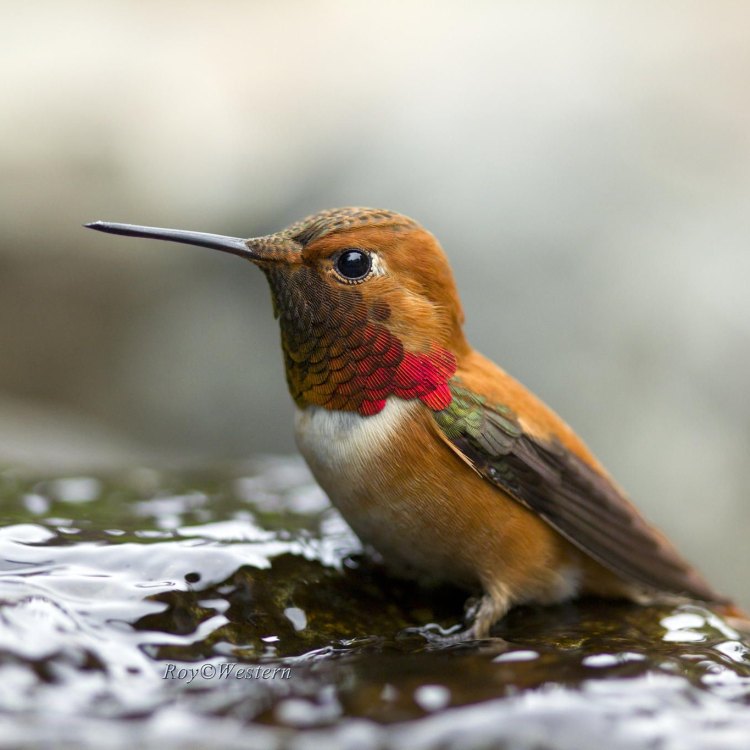
The Wondrous Rufous Hummingbird: An Intrepid Jewel of Nature
Disclaimer: The content provided is for informational purposes only. We cannot guarantee the accuracy of the information on this page 100%. All information provided here may change without prior notice.

